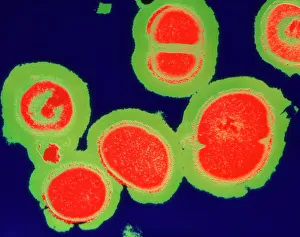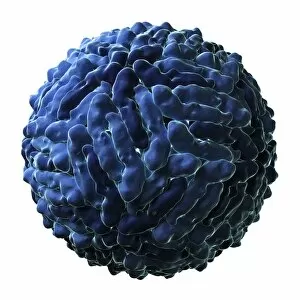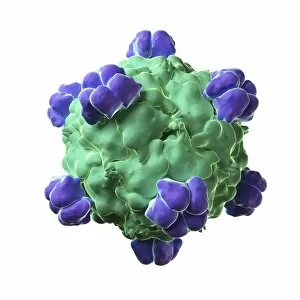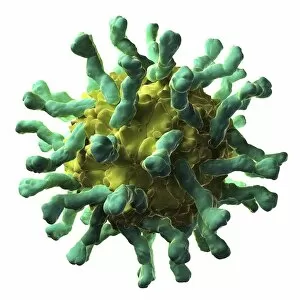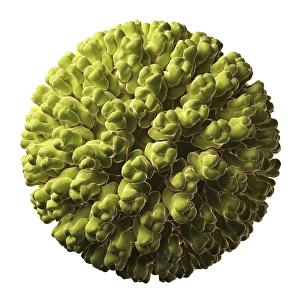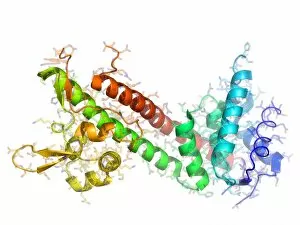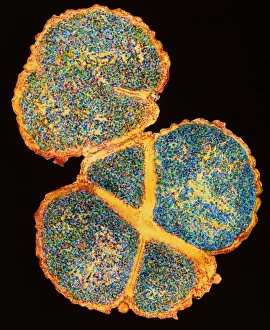Human Disease Collection
"Unveiling the Microscopic World of Human Disease: A Glimpse into the Invisible Battles" In a world teeming with life
All Professionally Made to Order for Quick Shipping
"Unveiling the Microscopic World of Human Disease: A Glimpse into the Invisible Battles" In a world teeming with life, there exists an unseen war fought within our bodies. Meet MRSA resistant Staphylococcus bacteria, a formidable opponent that challenges modern medicine's ability to combat infections. Alongside it, we encounter the Dengue virus particle F005/0688 and Hepatitis B virus particle F005/0700, both notorious for their devastating impact on human health. As we delve deeper into this microscopic realm, we come across Yellow fever virus particle F005/0703 and Adenovirus particle F005/0701 – stealthy invaders capable of causing severe illness in unsuspecting individuals. The Hepatitis E virus particle F005/0699 joins this rogues' gallery as another agent of liver disease that poses significant global health concerns. But amidst these adversaries lies RNA hairpin virus particle F005/0713 - an enigmatic entity whose mysteries continue to baffle scientists worldwide. Meanwhile, West Nile virus particle F005/0704 and Sindbis virus particle F005/0693 emerge as relentless foes responsible for outbreaks that have shaken communities around the globe. Not all heroes wear capes; some are microscopic defenders like Hepatitis E Virus Particle (F005 / 0687), tirelessly working towards understanding and eradicating diseases that afflict humanity. And let us not forget Bacteriophage X-174 Particle (F005 / 0731) and Caulobacter bacteriophage (F005 / 0690), warriors fighting against bacterial infections by targeting specific strains with precision. This captivating journey through the hidden world reminds us of our vulnerability but also highlights the remarkable resilience displayed by medical researchers who strive to unravel its secrets. Together, they work relentlessly to develop innovative treatments and preventive measures against these invisible enemies. Let us acknowledge their dedication while remaining vigilant in our pursuit of health and well-being.

